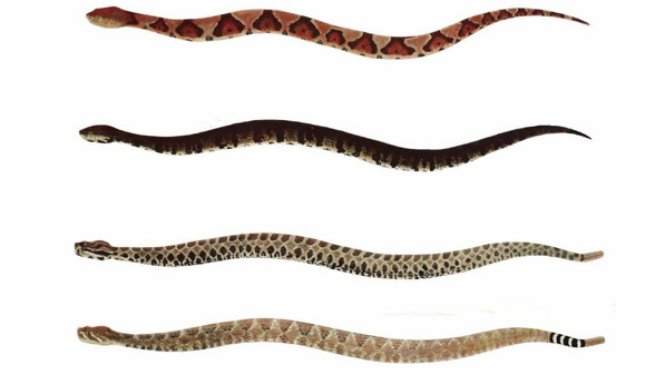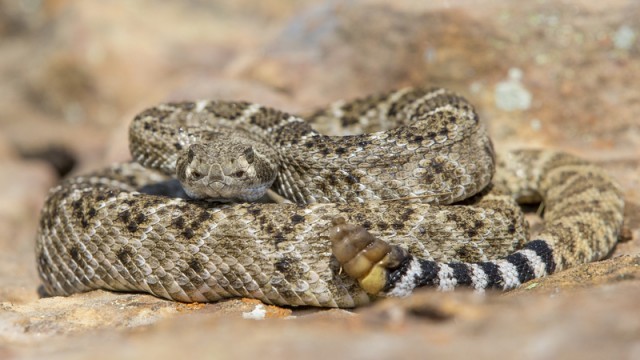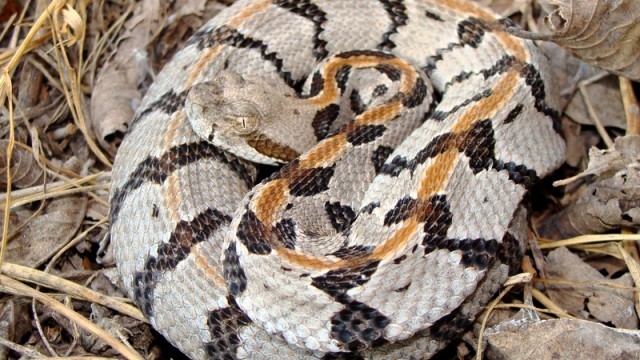Western Diamond-Backed Rattlesnake
A western diamond-backed rattlesnake is longer, which luckily makes it easier to spot but they’re still plenty dangerous. This snake also knows how to blend in with nature and is spotted mostly during late summer and early fall.
This rattler is 4-5 feet in length, but some are longer. You should know that in the U.S. this snake has caused the most snake-related deaths. It is common in Oklahoma and the diamond-back prefers hanging out in canyons and plains where it finds its prey. Its color varies from gray to buff and overall it has a very faded appearance. However, the white and black tail bands are easy to see.
Next Page »
Timber Rattlesnake
Timber rattlesnakes are 3-4 feet in length and can sometimes be longer. You’ll most likely find them in eastern Kansas and they like to hang out in cultivated fields and open areas during the spring and summer. Luckily this snake is fairly mild-mannered and does not wish to come in contact with a human, however, it does tend to dwell near human habitations so it’s important to be watchful.
The banded rattlesnake’s (another name for this snake) color varies from light gray to yellow and it has black chevron-shaped blotches of back that unite with lateral blotches from its crossbands. The tail is usually velvet black in adults and banded when this snake is young.
Be careful when you’re out and about during the spring and summer because this snake frequently crosses roads and also likes to spend its time beneath the edge of overhanging rocks. A hiker should look carefully before sitting on a rock or using one to climb – this snake could be hanging out on the rock and bite you!







